Welcome to one of the most active flamenco sites on the Internet. Guests can read most posts but if you want to participate click here to register.
This site is dedicated to the memory of Paco de Lucía, Ron Mitchell, Guy Williams, Linda Elvira, Philip John Lee, Craig Eros, Ben Woods, David Serva and Tom Blackshear who went ahead of us.
We receive 12,200 visitors a month from 200 countries and 1.7 million page impressions a year. To advertise on this site please contact us.
|
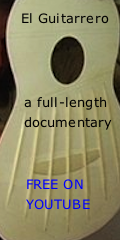
|
|
RE: Practicing-
|
You are logged in as Guest
|
|
Users viewing this topic: none
|
|
Login  | |
|

   
Ricardo
Posts: 15049
Joined: Dec. 14 2004
From: Washington DC

|
 RE: Practicing- (in reply to Kaloguitarist) RE: Practicing- (in reply to Kaloguitarist)
|
|
|
quote:
So, the question I am now going to ask is....Is the practice slow a MYTH???
Also, does this apply with picado and other techinques or just compas and falsetta...
It’s not a myth. Examining the music slow in order to cross every t and dot every i is important at an early stage of encountering new music or unfamiliar phrases. The problem is once a tempo is assigned to a phrase, so is a “feeling”. So the myth part involves the confusion that slow practice magically leads to fast perfection. The feeling is totally different at vastly different speeds, for all techniques, so you have lower and higher tempo thresholds where once you cross into another range, the feeling changes.
This is also why students don’t immediately see a connection between very slow Soleá and a fast buleria, and are confused about 12 vs 1 in medium tempo forms such as Soleá por bulerias or Alegrias etc. Many bulerias transcriptions represent compas on paper (such as Faucher) as identical phrases to Soleá however, the tempo difference between 60 bpm and 260 bpm completely changes the FEELING of the music.
In that sense, to me, it makes sense to first learn a short phrase very slow to get all the detail. But before adding a new phrase you must first experience the first phrase somewhere in the ball park of the actual tempo. What we see instead is students learn entire Pieces of music at half speed and after lots of practice and mastery down in that range the attempt to increase tempo hits a brick wall far below the lower threshold of the actual tempo. It is the wrong ball park.
The idea of playing for dance classes is there will be transitions during footwork that require guitarists to slip between “ball parks” seamlessly, usually with simple thematic falsetas or compas strumming but the concept of changing gears of feeling as tempo increases is what you learn. Later applying this to tricky solo guitar stuff certainly helps when learning challenging material slow but with a forward looking concept that the fast tempo will change things drastically.
_____________________________
CD's and transcriptions available here:
www.ricardomarlow.com
|
|
|
|
REPORT THIS POST AS INAPPROPRIATE |
Date Sep. 17 2021 18:54:26
 |
|

  
Filip
Posts: 432
Joined: Apr. 23 2006
From: Paris

|
 RE: Practicing- (in reply to Ricardo) RE: Practicing- (in reply to Ricardo)
|
|
|
quote:
Practice makes PERMINANT, not perfect. So if you practice slow with no mistakes, all you are doing is mastering the slow tempo. In order to play something at the correct tempo, you need to practice at THAT exact tempo. I would admit that there are ranges where the feeling is pretty similar. For example you want to play a tango at 160, practicing at 150 range will get you there, but 100 will not. If you feel 100 is NOT achievable even, you need to start a phrase at 150 right away, and loop it small bits, like two beats at a time looped, fixing the errors each pass until you do it many many times in a row perfectly, then add the next two beats or so. I am sure you have seen this video but it is basically how I think all falsetas or compas phrases should be learned. This is not a prepared video, you are watching me actually learn and master the thing
This is how I leant the intro of Guardian Angel, and this is probably my best played falseta (second to none if I take into account the effort taken to learn it). Another thing about it is that I can still remember the whole falseta and can get back to the same level of playing after a very short practice time.
Ricardo, I also read your following comment about doing one falseta slow, then fast, and then going to the next falseta. I guess the answer to this might be obvious, but in that Tomatito falseta are you actually looking at the scores (I can't really tell) or you memorised the falseta first?
|
|
|
|
REPORT THIS POST AS INAPPROPRIATE |
Date Sep. 17 2021 20:13:06
 |
|

   
etta
Posts: 347
Joined: Jan. 20 2010

|
 RE: Practicing- (in reply to Kaloguitarist) RE: Practicing- (in reply to Kaloguitarist)
|
|
|
|
I play few "gigs", weddings, wine tastings, etc., and played for a dance group for a while. I did meet with a small guitar group, mostly classical, but covid has put that group on hold for now. So, I play for myself, and it is often the highlight of my day. I work on technique but also explore original variations that come to my head. I guess in short I jam with the guitar for my entertainment while trying to improve technique and exploring new options on traditional forms. I do record a number of these tunes, (several hundred by now), and listening critically does help me improve. For me, this is never work, but pure pleasure with the guitar, for me, and anyone who might care to listen.
|
|
|
|
REPORT THIS POST AS INAPPROPRIATE |
Date Sep. 17 2021 22:16:51
 |
|
 New Messages New Messages |
 No New Messages No New Messages |
 Hot Topic w/ New Messages Hot Topic w/ New Messages |
 Hot Topic w/o New Messages Hot Topic w/o New Messages |
 Locked w/ New Messages Locked w/ New Messages |
 Locked w/o New Messages Locked w/o New Messages |
|
 Post New Thread
Post New Thread
 Reply to Message
Reply to Message
 Post New Poll
Post New Poll
 Submit Vote
Submit Vote
 Delete My Own Post
Delete My Own Post
 Delete My Own Thread
Delete My Own Thread
 Rate Posts
Rate Posts
|
|
|
Forum Software powered by ASP Playground Advanced Edition 2.0.5
Copyright © 2000 - 2003 ASPPlayground.NET |
9.472656E-02 secs.
|


 Printable Version
Printable Version



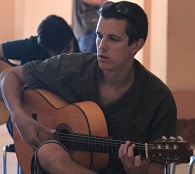



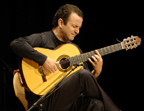

 and I seriously enjoying everyone's contribution. It's not only helping me, I am sure it will help others as well...
and I seriously enjoying everyone's contribution. It's not only helping me, I am sure it will help others as well... 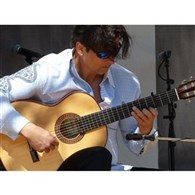
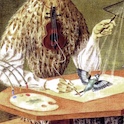


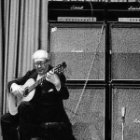

 New Messages
New Messages No New Messages
No New Messages Hot Topic w/ New Messages
Hot Topic w/ New Messages Hot Topic w/o New Messages
Hot Topic w/o New Messages Locked w/ New Messages
Locked w/ New Messages Locked w/o New Messages
Locked w/o New Messages Post New Thread
Post New Thread